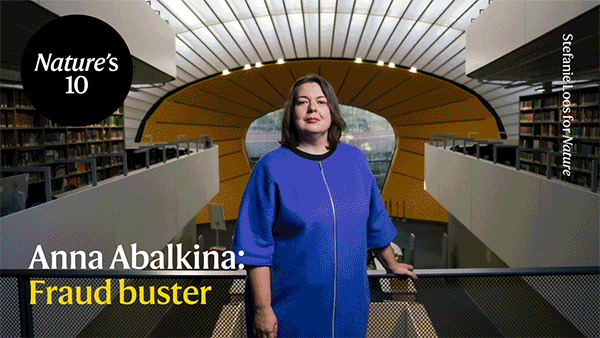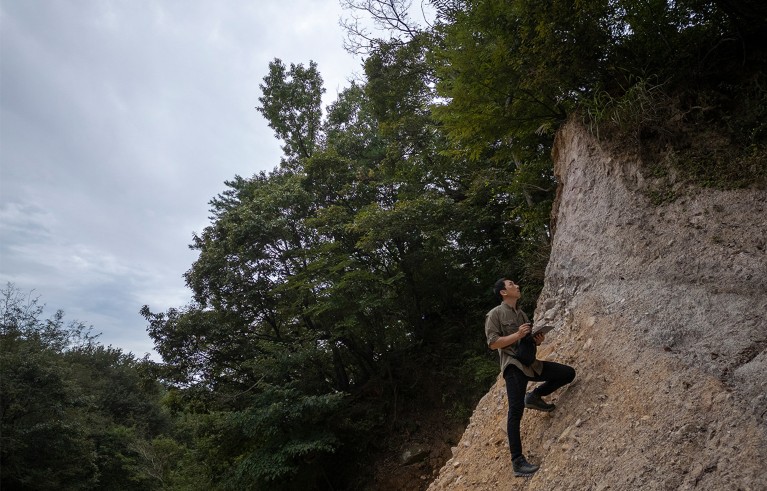Hello Nature readers, would you like to get this Briefing in your inbox free every day? Sign up here.

A fraud buster, a nuclear-clock maker and a virus hunter are just a few of the remarkable people chosen for this year’s Nature’s 10. The list, compiled by Nature’s editors, includes Kaitlin Kharas, a PhD student who helped to lead a campaign to get Canadian graduate students and postdocs their biggest pay rise in 20 years; and Muhammad Yunus, an economist and Nobel peace laureate who is now the interim leader of Bangladesh.
The European Union (EU) has appointed Bulgarian politician Ekaterina Zaharieva as commissioner for start-ups, research and innovation in its five-yearly shake-up of its executive body. Zaharieva will help to shape their next multibillion-euro science programme, the follow-up to the Horizon Europe scheme. The inclusion of ‘start ups’ in Zaharieva’s title, a first for the position, reflects the increased focus on business. Commission president Ursula von der Leyen has pledged to prioritize science during her second term, as the EU aims to become less dependent on US and Chinese technologies.
Clay bowls discovered in Iraq could be evidence of one of the world’s earliest governments. Residue in the bowls suggests they were used to serve meals, which researchers suggest were given out in exchange for labour — a form of centralized authority. Evidence that the site was later abandoned without any signs of violence or environmental pressures hints that local people might have rejected the authority and left. “Hierarchical forms of government were not inevitable in the development of early complex societies,” says archaeologist Claudia Glatz. “Local communities found ways to resist and reject tendencies towards centralized power.”
In a collection of nearly 3,400 papers from 2023 that included at least one bar chart, almost one-third distorted the data in some way, according to new analysis that has not yet been peer reviewed. Most issues related to failing to start the y axis at zero, or mistakes with logarithmic axes. The former can make small disparities look larger; the latter can minimize differences. On the other hand, these choices can be examples of ‘scientific shorthand’ that are well-understood within the biz. “These authors are correctly pointing out that many people could misunderstand what is being stated,” says data-visualization scientist Helena Jambor. “But that does not mean that it was necessarily incorrect or that two scientists talking about the data would misunderstand one another.”
Reference: bioRxiv preprint (not peer reviewed)
Features & opinion
Nature’s pick of nine books to shape your science career in 2025 includes an investigation of toxic workplaces and how to fix them, a guide to being more influential at work, and a rejection of ‘performative busyness’ in favour of working at a natural pace with a focus on quality.
For the best and safest results, academics and industry scientists must collaborate to guide the development of more powerful forms of AI, argues a Nature editorial. Much of the work to develop such AI is happening in private companies, which don’t always publish openly. Governments, companies, funders and researchers must identify their complementary strengths so that applications of AI research are robust, its risks are mitigated as much as possible, and tech companies’ claims can be verified independently.
Where I work

Jeong-Sik Oh is a geomorphologist at Kyungpook National University in Daegu, South Korea.Credit: Dave Tacon for Nature
“Until the Tōhoku earthquake in 2011 caused the nuclear disaster at Fukushima in nearby Japan, people in South Korea had not paid much attention to active faults,” says geomorphologist Jeong-Sik Oh. “We’ve become more worried about seismic risks since then.” In 2017, South Korea’s government founded the Korea Active Fault Research Group to create the country’s first active-fault map. Oh and others in the group discovered the previously hidden active fault line, which he is examining in the picture, on a ridge in a forested valley. Researchers use drones and lidar to spot such rifts, but “the best tool of all is my feet”, says Oh. (Nature | 3 min read)
On Friday, Leif Penguinson was rock hopping on a stone run in East Falkland, Falkland Islands. Did you find the penguin? When you’re ready, here’s the answer.
Thanks for reading,
Flora Graham, senior editor, Nature Briefing
With contributions by Jacob Smith
Want more? Sign up to our other free Nature Briefing newsletters:
• Nature Briefing: Careers — insights, advice and award-winning journalism to help you optimize your working life
• Nature Briefing: Microbiology — the most abundant living entities on our planet — microorganisms — and the role they play in health, the environment and food systems
• Nature Briefing: Anthropocene — climate change, biodiversity, sustainability and geoengineering
• Nature Briefing: AI & Robotics — 100% written by humans, of course
• Nature Briefing: Cancer — a weekly newsletter written with cancer researchers in mind
• Nature Briefing: Translational Research — covers biotechnology, drug discovery and pharma


